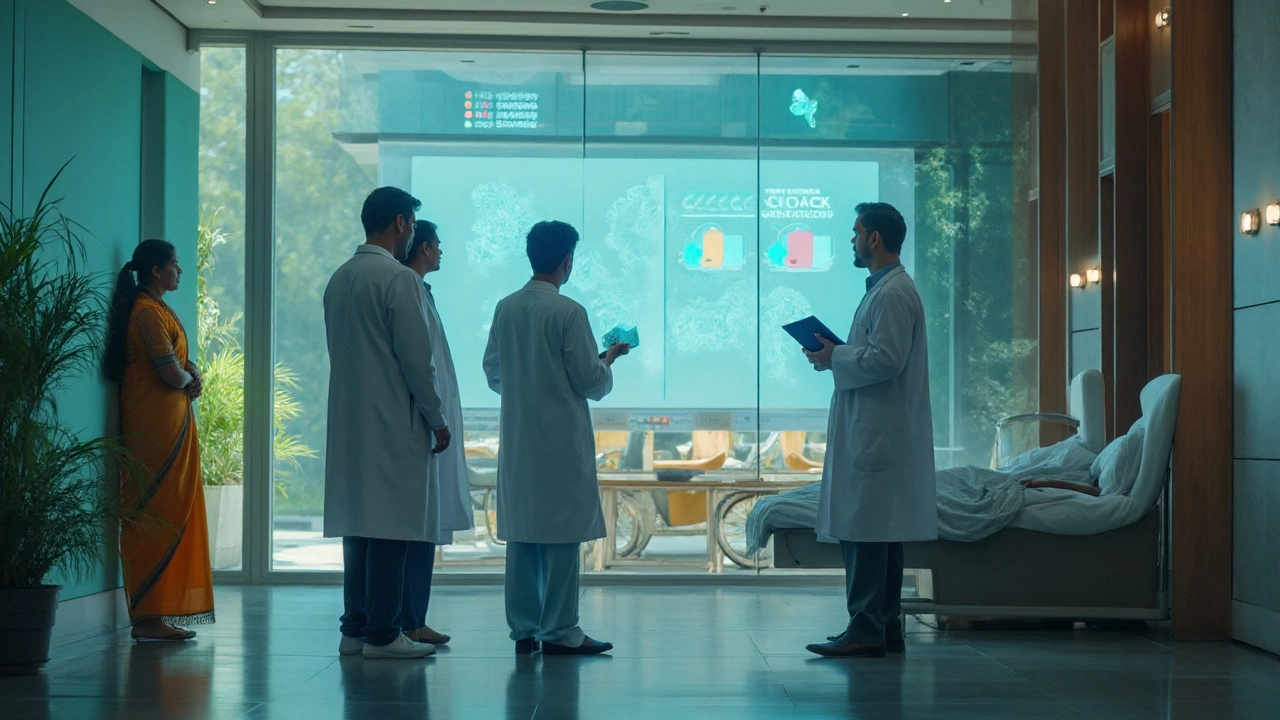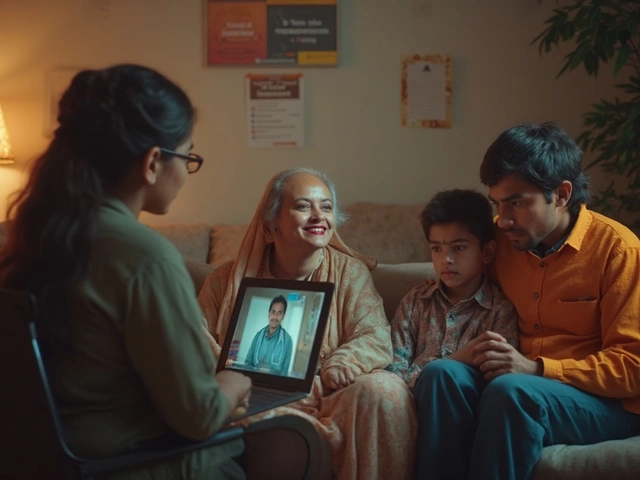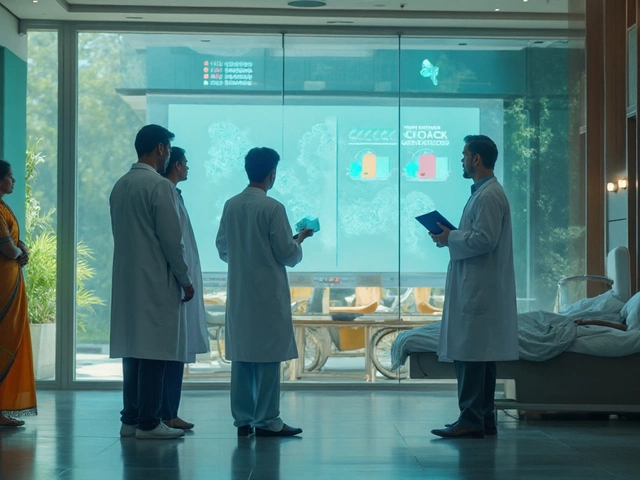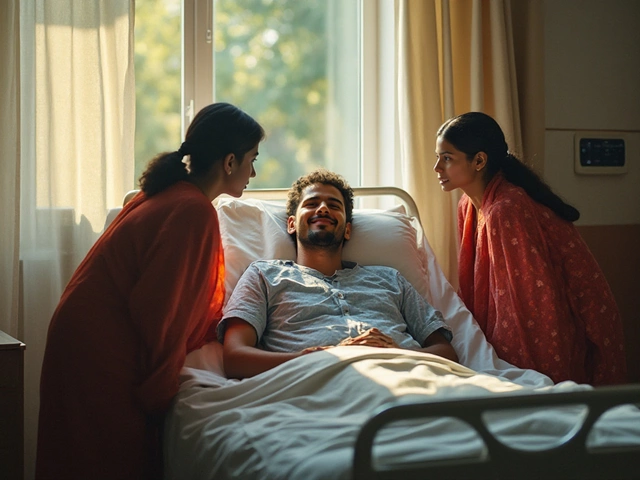You clicked this because you want a straight answer: how long can someone live with cancer? Here’s the truth I’ve learned from years of sitting with families in oncology waiting rooms in Bangalore-there isn’t a single number. People live with cancer for weeks, months, years, even decades. What matters most are a few key variables you can actually understand and act on.
cancer life expectancy isn’t a fixed deadline-it’s a moving target shaped by the cancer type, stage, biology, treatment options, and how your body responds. If you get a grip on those, you’ll get a more honest, useful answer than any one-size-fits-all stat can give.
TL;DR
- There’s no single timeline; survival ranges from curable to long-term control to life-shortening illness depending on type, stage, and biology.
- Stage and subtype drive most of the outlook; biomarkers (like EGFR, HER2, ALK, BRCA) and new drugs can shift the curve a lot.
- Five-year relative survival varies widely by cancer; examples are in the table below (sources: NCI SEER 2014-2020, ESMO/ASCO updates, ICMR-NCRP India).
- Ask for ranges, not a date. Medians aren’t destiny-half of people live longer than the median.
- Early, goal-aligned care-including palliative care-often improves both quality of life and how long you live.
What really determines how long someone can live with cancer
When people hear “prognosis,” they often think of a number. Doctors don’t start there. They think in layers. Here are the levers that actually move the dial.
1) Cancer type and stage at diagnosis
- Type: Some cancers are very treatable (thyroid, many prostate, early breast), some are tough (pancreatic, aggressive brain tumors), and others sit in-between (colorectal, lung).
- Stage: Localized (confined), regional (nearby spread), or distant (metastatic). Stage is the single biggest predictor in most solid tumors. Many localized cancers are curable; distant disease is often controllable, sometimes for years, sometimes not.
2) Tumor biology and biomarkers
- Hormone receptors (ER/PR in breast), HER2 status, EGFR/ALK/ROS1/BRAF in lung, MSI-H/dMMR in colorectal, BRCA in ovarian-these labels aren’t trivia. They unlock specific drugs that can stretch time meaningfully.
- Grade (how fast cells look like they’re growing), proliferation markers (like Ki-67), and tumor mutation burden can hint at speed and treatment sensitivity.
3) Your health going into treatment
- Performance status (how active you are), age, heart/lung/kidney function, weight and nutrition, diabetes control-these decide what treatments you can safely get and how well you’ll tolerate them.
- Two people with the same cancer can have very different outcomes if one can do daily walks and the other is mostly in bed. It’s not about blame; it’s about what your body can handle.
4) Treatment era and access
- Oncology changes fast. Survival for lung cancer improved in the last decade because of targeted drugs and immunotherapy. Same for melanoma and multiple myeloma. Being treated in 2025 is not the same as 2012.
- Access matters. Getting the right scans, biomarker tests, and treatments on time shapes outcomes. In India, timely access can be the difference between cure and late-stage disease.
5) Response to treatment and the “trajectory”
- Complete response, partial response, stable disease, progression-each checkpoint tells a story. Tumors that shrink or stay stable for 6-12 months can set you up for longer control.
- Treatment lines: First-line results are strongest; second and third lines can still help. Some cancers behave chronically with multiple lines over many years (e.g., hormone-sensitive breast cancer, myeloma).
6) Complications and supportive care
- Infections, clots, malnutrition, severe side effects-these can shorten life more than the tumor itself if not managed well.
- Good supportive care-from anti-nausea meds to pain control to physiotherapy-keeps you strong enough to continue treatment longer.
7) The human side
- Stress, sleep, family support, and practical help with money or transport sound “soft,” but they change adherence and wellbeing, which feed into survival. When families in Bangalore coordinate rides and meals, I see patients stick to treatment schedules better. It’s that simple.
A quick word on numbers you hear
- Median survival is the midpoint-half live longer, half shorter. Not a deadline.
- Five-year relative survival compares people with cancer to similar people without cancer. It’s a population metric, not your personal future.
- Conditional survival improves over time. If you’ve already lived two years after diagnosis, your odds of living three more often get better than at day one.
| Cancer | Stage | Approx. 5-year relative survival | Source / notes |
|---|---|---|---|
| Breast (female) | Localized / Regional / Distant | ~99% / ~86% / ~31% | NCI SEER 2014-2020 |
| Prostate | Localized/Regional / Distant | ~100% / ~34% | NCI SEER 2014-2020 |
| Colorectal | Localized / Regional / Distant | ~91% / ~73% / ~15% | NCI SEER 2014-2020 |
| Lung (all types) | Localized / Regional / Distant | ~65% / ~37% / ~8% | NCI SEER 2014-2020; improved in subsets with targeted therapy |
| Pancreatic | Localized / Regional / Distant | ~44% / ~16% / ~3% | NCI SEER 2014-2020 |
| Ovarian | All stages / Distant | ~50% / ~31% | NCI SEER 2014-2020 |
| Thyroid | All stages | ~98% | NCI SEER 2014-2020; varies by subtype |
Notes: These are US population estimates. Outcomes vary by country and access. In India, the ICMR-NCRP reports later-stage diagnoses for several cancers, which generally lowers survival. Still, individual results can beat the averages, especially with timely, guideline-based treatment.

What to do next: a step-by-step way to get a real answer for you
You don’t need to memorize every stat. Use this sequence to turn a scary question into a plan you can act on.
- Pin down the exact diagnosis. Ask for the full name (e.g., “ER+/HER2- invasive ductal carcinoma, grade 2”; “adenocarcinoma of lung, EGFR exon 19 del, stage IV”). Guessing from a scan leads you astray.
- Get complete staging and baseline testing. That means the right scans (PET-CT/CT/MRI as indicated) and standard labs. If you’re in India, confirm your center follows current ICMR/NCCN-equivalent guidelines for imaging and staging.
- Insist on biomarker testing where it matters. Examples:
- Lung: EGFR, ALK, ROS1, BRAF, MET, RET, KRAS G12C, PD-L1.
- Breast: ER, PR, HER2; sometimes genomic tests like OncotypeDX (early disease).
- Colorectal: RAS, BRAF, MSI-H/dMMR.
- Ovarian: BRCA1/2, HRD where available.
- Ask your oncologist these five questions:
- Is the goal cure, long-term control, or comfort-focused care?
- What are the best first-line options for my biology and stage?
- What’s the likely range for control (months/years) if we start with Plan A?
- What’s Plan B if Plan A stops working?
- Which side effects should we expect, and how will we manage them?
- Think in ranges, not deadlines. Ask for a “typical range” and the “best-case if I respond well.” Then ask what you can do to tilt toward the better end (exercise, nutrition, early symptom reporting, dose adjustments).
- Track response every 8-12 weeks. Use the same scan type when possible. Keep a simple log: date, treatment, side effects, scan summary, doctor’s plan.
- Get serious about supportive care from day one. Pain team, nutritionist, physiotherapy, mental health support, social work. Early palliative care in metastatic disease improved quality of life and, in a classic lung cancer trial, even added months of life (Temel et al., NEJM 2010).
- Second opinion? Worth it. Especially for rare cancers, stage III/IV disease, or when surgery/radiation decisions are complex. A major center can confirm the plan or tweak it.
- Ask about clinical trials. Trials aren’t “last resort.” Many first- and second-line trials add promising drugs to standard care. In India, metro cancer centers often have active trials; ask your oncologist to check registries.
- Plan finances early. Explore insurance coverage, government schemes (e.g., PM-JAY where eligible), and hospital financial aid desks. Timely funding prevents dangerous delays.
- Revisit goals as things change. After each scan, ask: do we keep going, switch, or shift focus to comfort? There’s strength in choosing a path that matches your priorities.
Heuristics you can use without a calculator
- If your cancer is localized and the team says “curative,” survival often stretches into years-to-decades-focus on completing treatment and recovery.
- If it’s metastatic but has a strong target (e.g., EGFR-mutated lung, hormone-positive breast), think in multi-year horizons with periodic switches.
- If it’s metastatic without clear targets and fast-growing, think in months-to-a-few-years, but remember medians shift with new drugs and personal response.
- If performance status is poor (mostly in bed), treatments are tougher. Quality-focused care can still add time by preventing complications and suffering.
Pitfalls to avoid
- Don’t treat the median as your expiry date.
- Don’t delay treatment while chasing unproven “miracle” alternatives. If you want to use Ayurveda or supplements, talk to your oncologist to avoid dangerous interactions.
- Don’t ignore infections, fever, clots, or sudden pain. These are emergencies in cancer care.
- Don’t accept “no biomarker testing” when guidelines recommend it. It can literally change your timeline.
A simple decision map
- If stage I-III and operable: surgery (± chemo/radiation/targeted) → aim for cure → surveillance.
- If stage III and borderline operable: neoadjuvant (pre-op) therapy → reassess → surgery/radiation if possible.
- If stage IV with targetable mutation: targeted therapy first → monitor → next-line at resistance → ongoing supportive care.
- If stage IV without target and fit: chemo ± immunotherapy → reassess every 2-3 months → consider maintenance or switch.
- If stage IV and frail: consider gentler regimens or comfort-focused care → symptom control → protect time at home.

Examples, numbers, cheat-sheets, and your big questions
Real-world scenarios say more than abstract stats. Here are common ones I see.
Example 1: Early breast cancer (ER+/HER2-, node-positive, age 48)
Treatment usually includes surgery, chemo based on risk, radiation if needed, and 5-10 years of endocrine therapy. Five-year relative survival for localized/regional disease is high (~99%/~86%), and many women live decades cancer-free. Genomic assays can help skip chemo if risk is low. Exercise and bone health meds reduce relapse risk further.
Example 2: Metastatic lung adenocarcinoma with EGFR exon 19 deletion (non-smoker, age 55)
First-line oral EGFR inhibitors can shrink disease fast and control it for years. It’s common to see 2-4 years on first- and second-line targeted drugs combined, sometimes longer, especially with newer agents. If resistance shows up, biopsy can reveal a new target.
Example 3: Stage IV pancreatic adenocarcinoma (age 63)
With modern chemo (like FOLFIRINOX or gemcitabine/nab-paclitaxel), median survival is often under a year, but some patients get 15-18 months or more, especially if they start strong and complications are controlled. Early pain and nutrition support help a lot.
Example 4: Multiple myeloma (age 60)
This blood cancer often behaves like a chronic illness now. With triplets/quadruplets, transplant where appropriate, and maintenance, many patients live 7-12+ years, cycling through lines as needed. New immunotherapies keep extending options.
Example 5: Follicular lymphoma (stage IV at diagnosis but indolent)
Stage IV here doesn’t mean short life. Many people live 10-20 years with periods of observation, targeted antibodies, and chemo-lite regimens when needed.
Quick checklist: what to ask at your next visit
- What exact type and stage do I have? Can I see it written out?
- Is there a target or biomarker that changes my treatment?
- What is the goal: cure, control, or comfort? How will we measure success?
- What’s the typical range for control with the first plan?
- If we need to switch, what are the next options?
- Which side effects should I call about right away?
- Can we add palliative care now to help with symptoms and planning?
Cheat-sheet: how to interpret common words
- Remission: Cancer is quiet; may or may not be gone.
- NED (No Evidence of Disease): Scans and tests don’t show cancer. It can still be microscopic; time tells.
- Stable disease: Not shrinking, not growing much. This can be a win if you feel well.
- Progression: Cancer is growing or spreading; time to adjust treatment.
- Palliative care: Support for symptoms and decisions, at any stage. Not the same as hospice.
- Hospice: Comfort-focused care near the end of life. In India, home-based hospice is available in many cities.
Mini-FAQ
- Is stage 4 a death sentence? No. Some stage 4 cancers are managed for years, especially with targets (like EGFR/ALK in lung) or hormone-sensitive disease (like many breast or prostate cancers). Others are harder; response and complications matter.
- Can palliative care really help me live longer? Yes, in some settings. A landmark study in metastatic lung cancer showed early palliative care improved quality of life and added a few months on average. Many later studies show better symptom control and fewer ER visits.
- Do diet and exercise change survival? They don’t replace treatment, but they help you tolerate therapy and recover faster. In breast and colon cancers, regular moderate exercise is linked with lower recurrence and better survival.
- When should I stop treatment? When the burdens clearly outweigh the benefits and no realistic option can change that. Many people live longer-and better-when they switch to comfort-focused care at the right time. This is a personal choice; ask for a frank talk about goals and trade-offs.
- Why do survival numbers differ across websites? Different years, countries, and data sets. Use recent, reputable sources (NCI SEER, ICMR-NCRP, ESMO, ASCO). Ask your doctor for the most relevant, local numbers.
Credible sources behind the numbers
- National Cancer Institute (SEER Program), 2014-2020 data releases.
- ICMR-NCRP (India) reports on incidence and stage at diagnosis, 2020-2022.
- Major society updates (ESMO 2024/2025, ASCO 2023/2024) for new drug impacts.
- Temel JS et al., NEJM 2010: Early palliative care in metastatic NSCLC improved outcomes.
If you remember one thing, let it be this: you’re not hunting a date-you’re shaping a trajectory. The sooner you pin down the biology, get the right plan, and keep yourself strong, the more time you take back.
Next steps based on where you are
- Newly diagnosed, early-stage: Get complete staging; ask if cure is likely. Confirm if chemo is truly needed (or if a genomic test can help decide). Line up surgery/radiation at a center that does high volumes of your cancer type. Plan return-to-work and rehab early.
- Newly diagnosed, metastatic: Fast-track biomarker tests. Ask for the best first-line plan now; second-line options later. Meet palliative care early for symptom control. Set a simple monitoring schedule.
- Mid-treatment, mixed results: Ask: what’s our exact response? If stable, is maintenance an option? If progressing, what’s next best line? Re-check for new targets with a biopsy if appropriate.
- Heavily pre-treated or frail: Focus on comfort and time at home. Consider low-intensity treatments only if they truly help symptoms. Get hospice information early, even if you’re not ready yet-you have choices.
- Caregivers: Keep a meds list, symptom diary, and calendar. Protect your sleep and ask for help. You can’t pour from an empty cup.
I live in a city where cutting-edge cancer care shares a street with everyday life. I’ve seen late-night rickshaw rides home after chemo, street chai before scan results, and families who turned a terrifying diagnosis into years packed with meaning. Numbers matter. But how you use them matters more.







